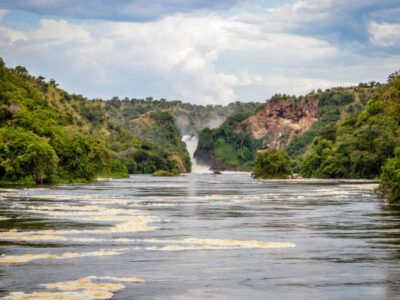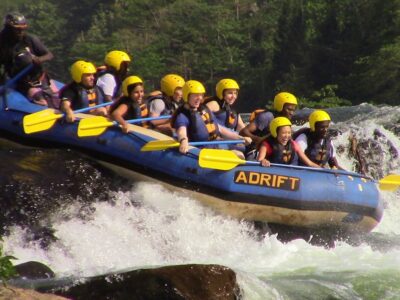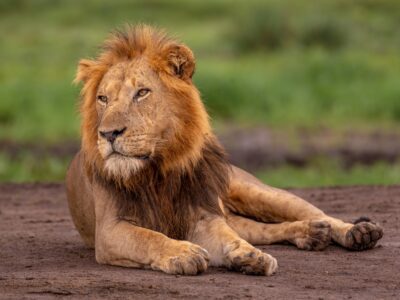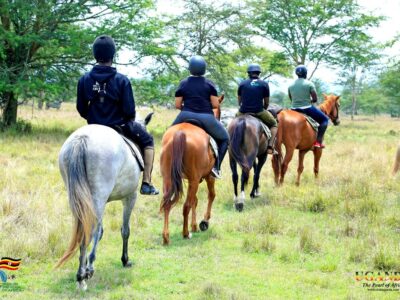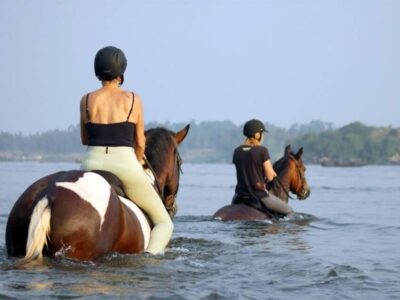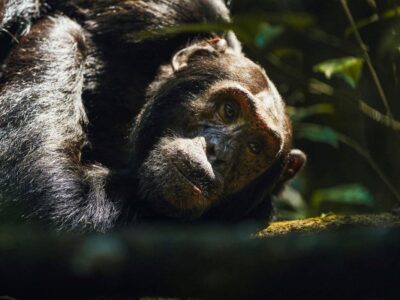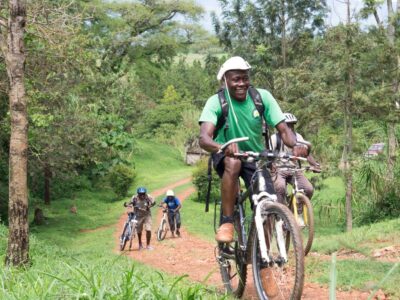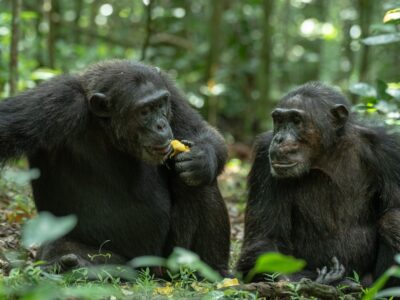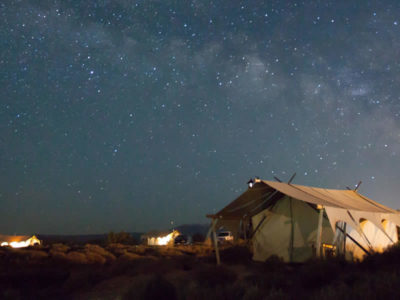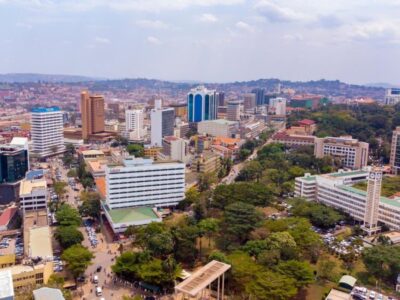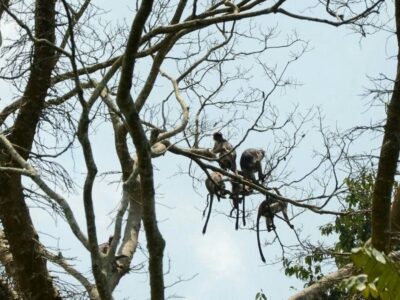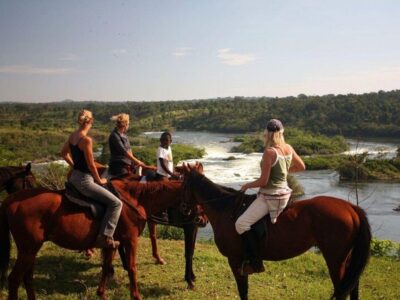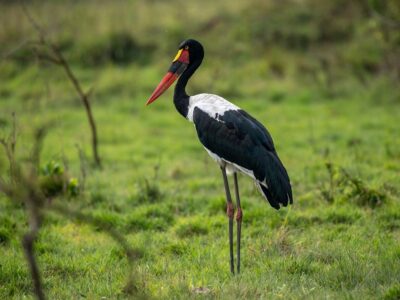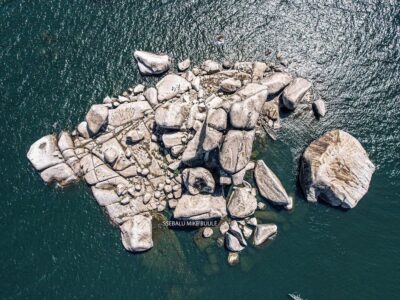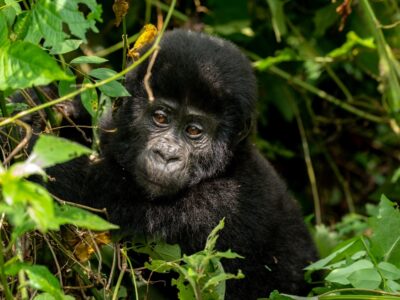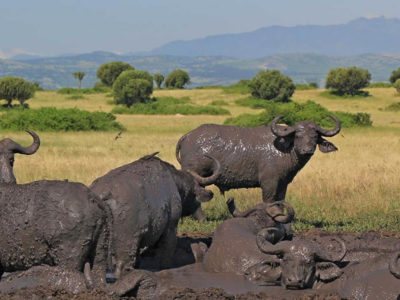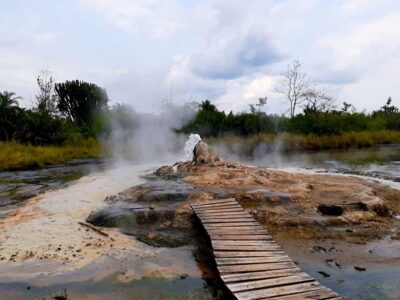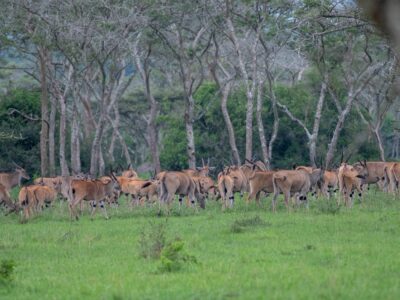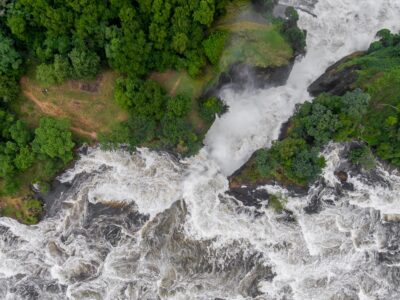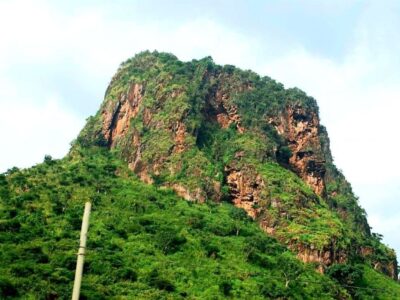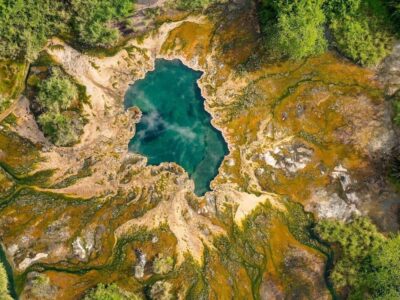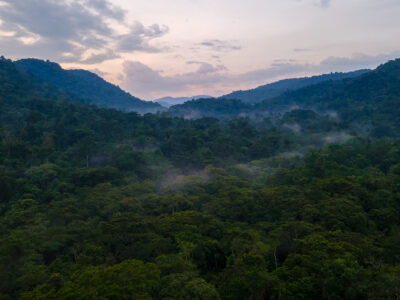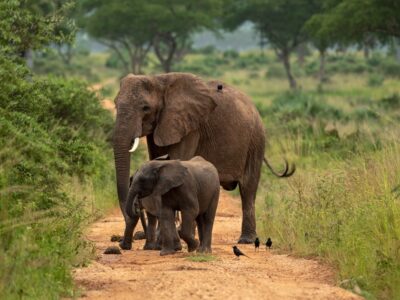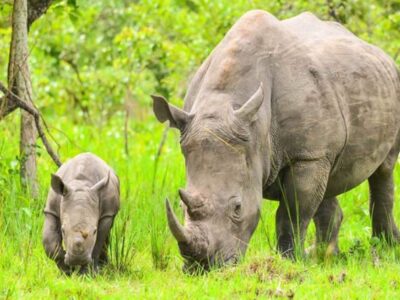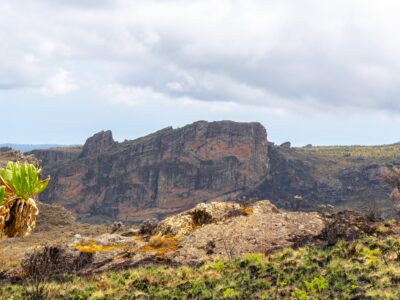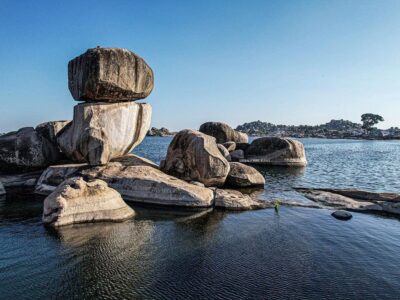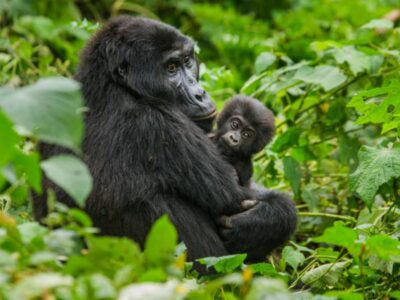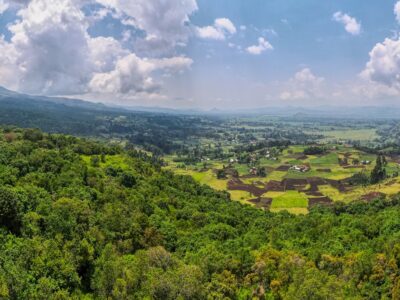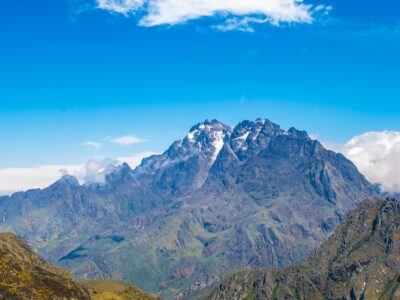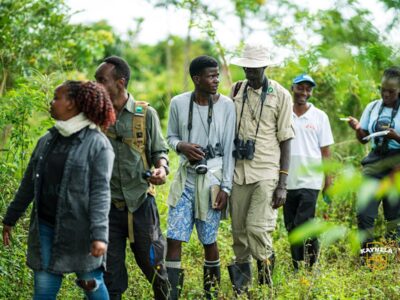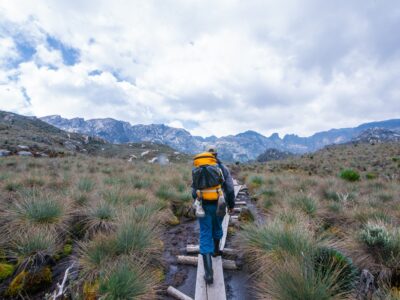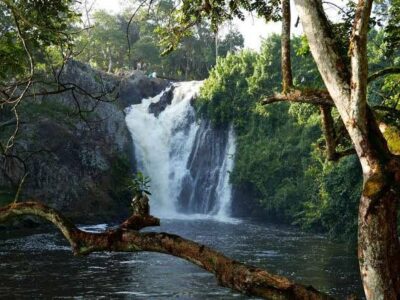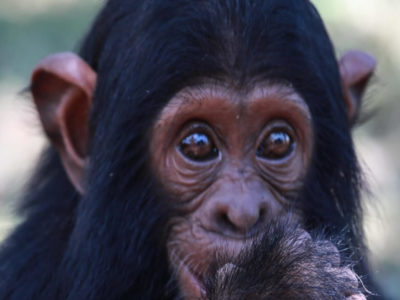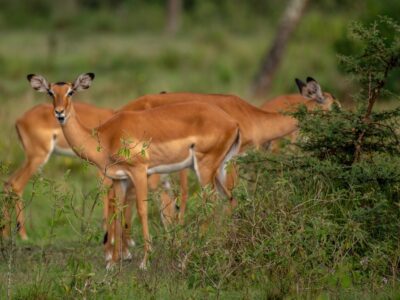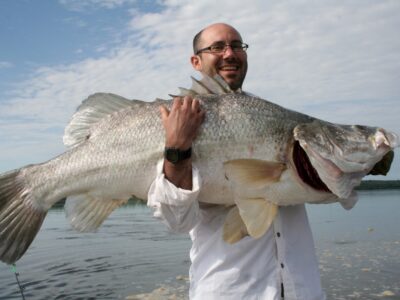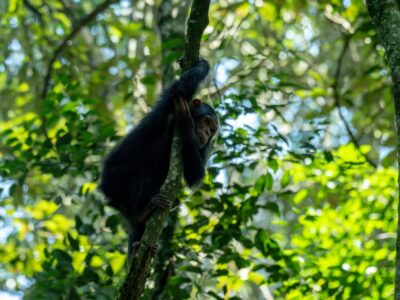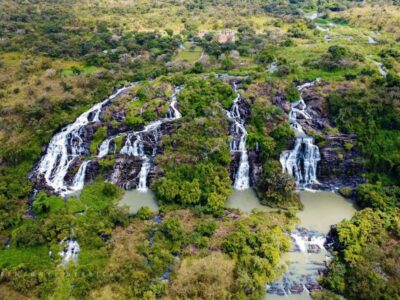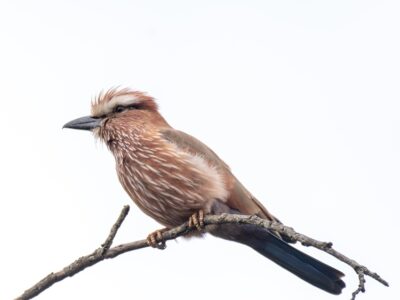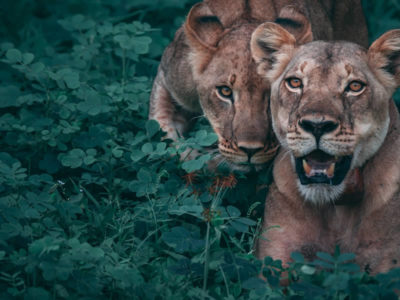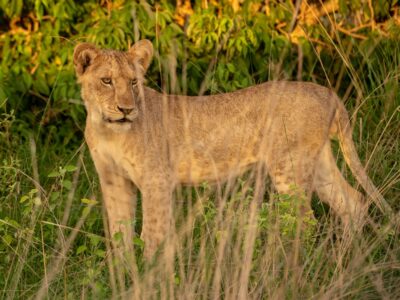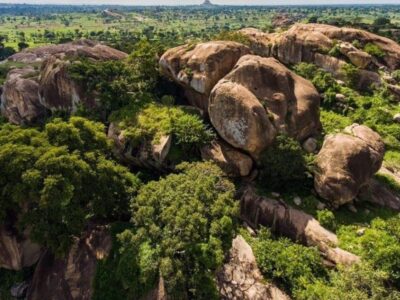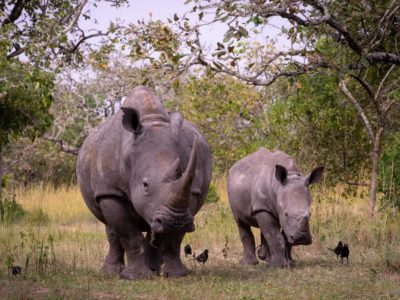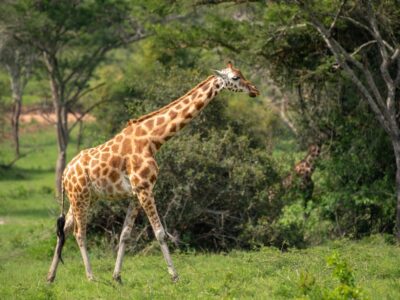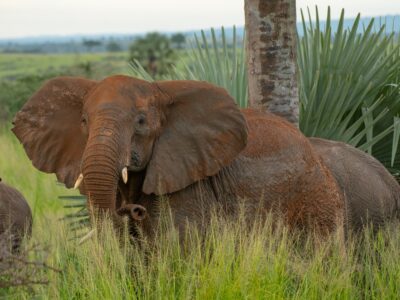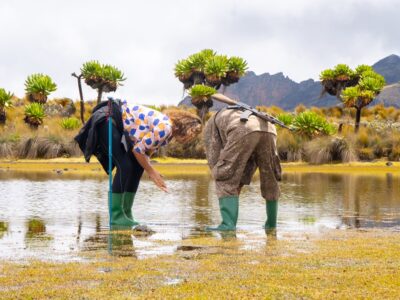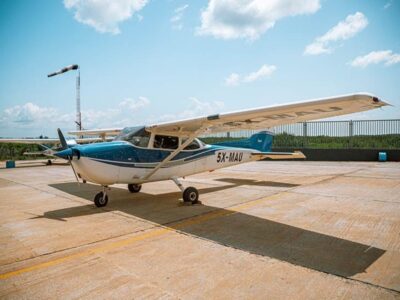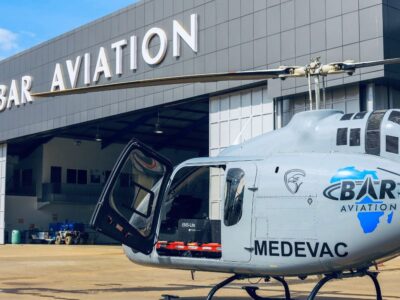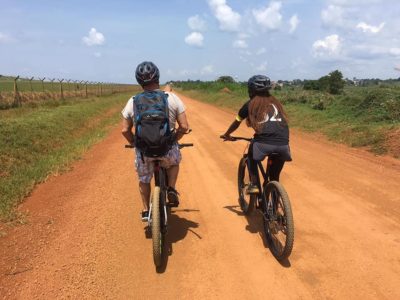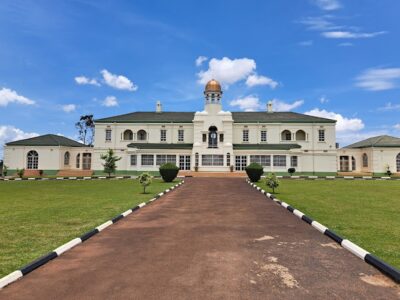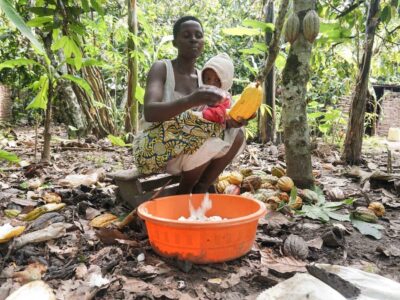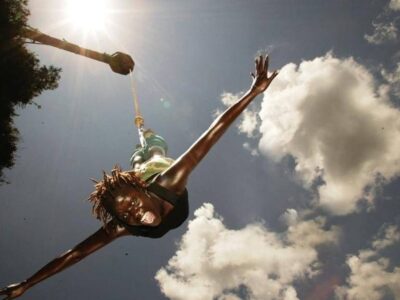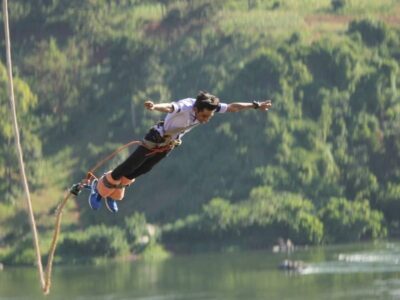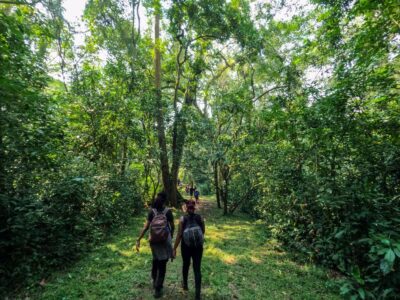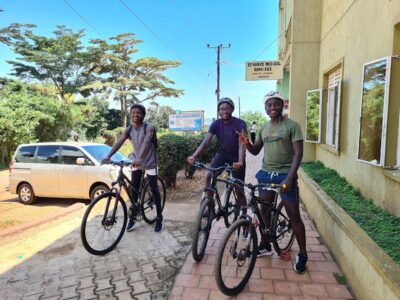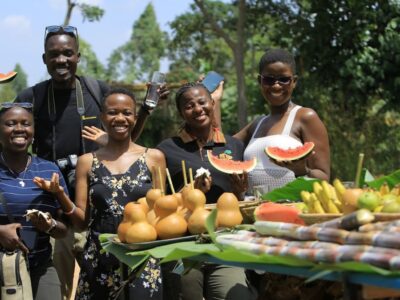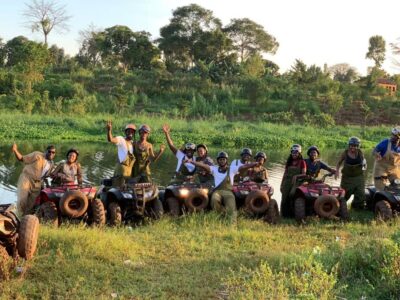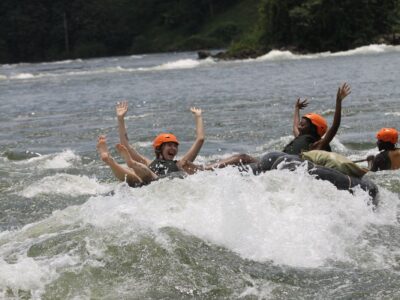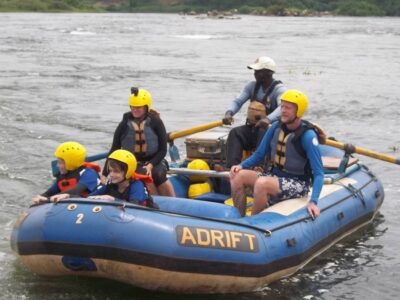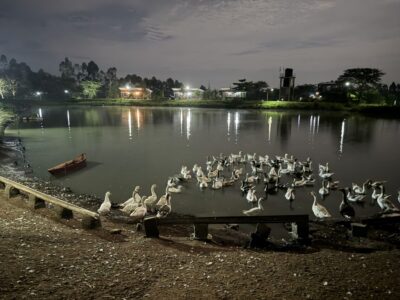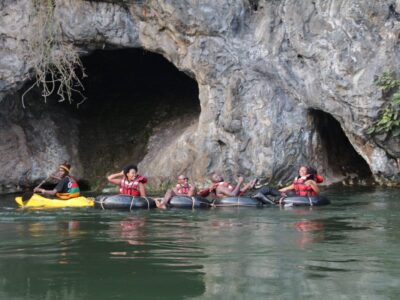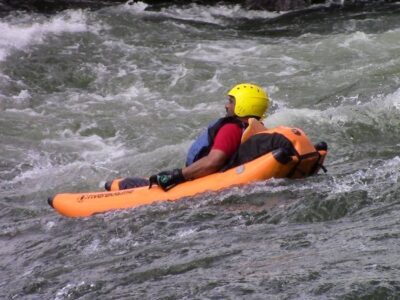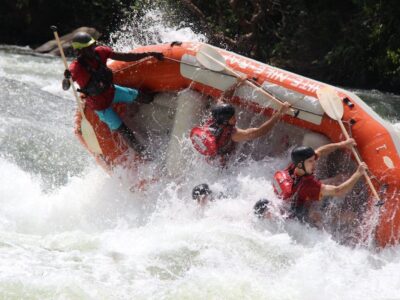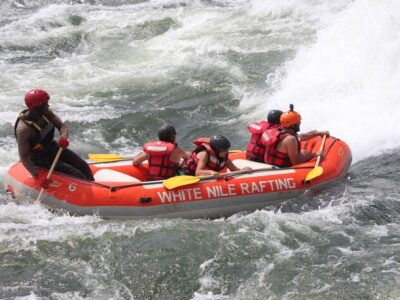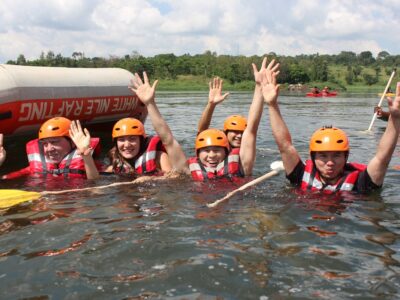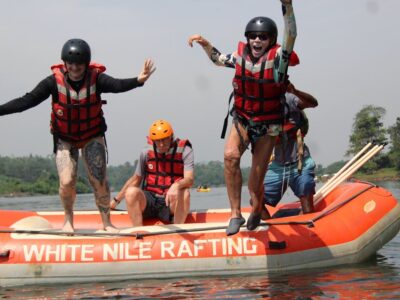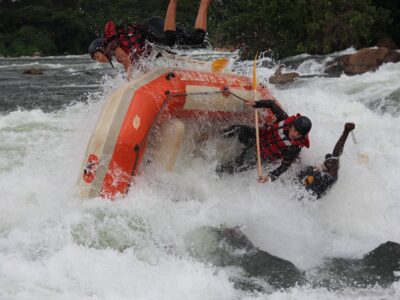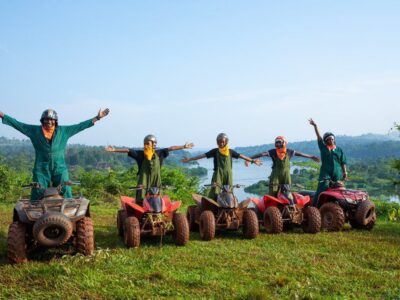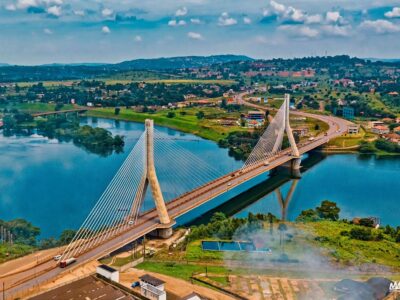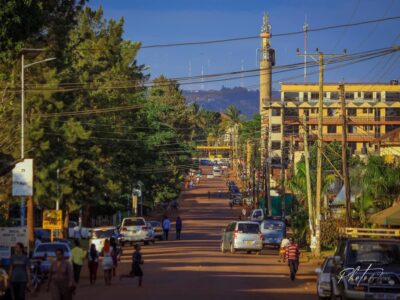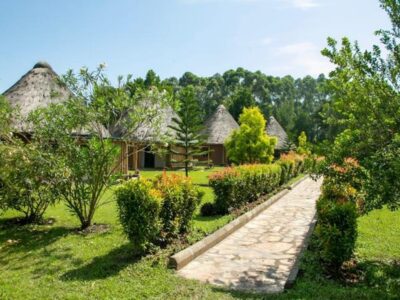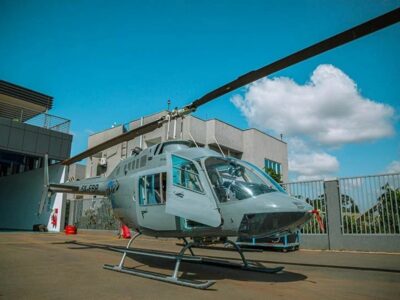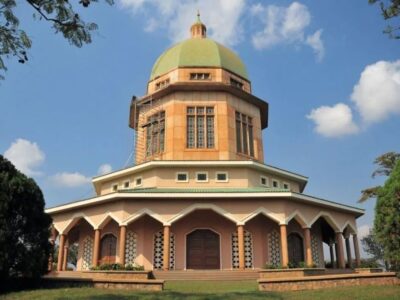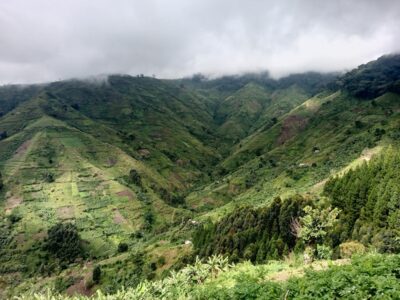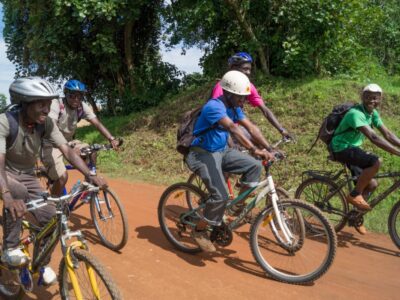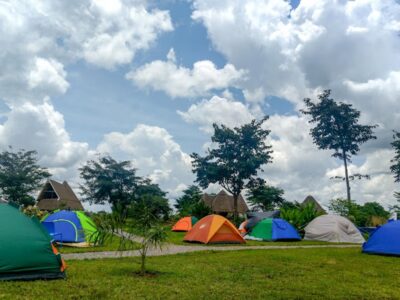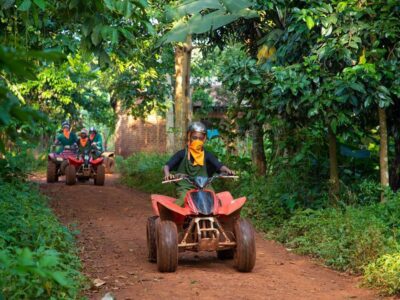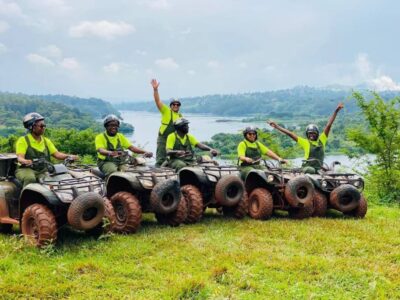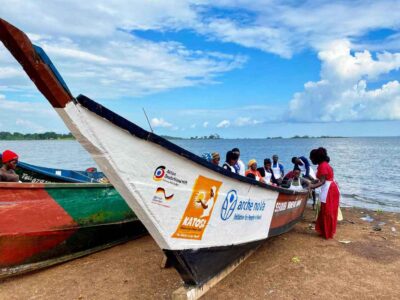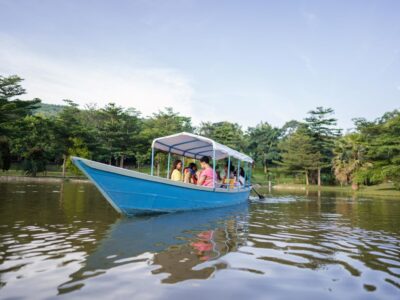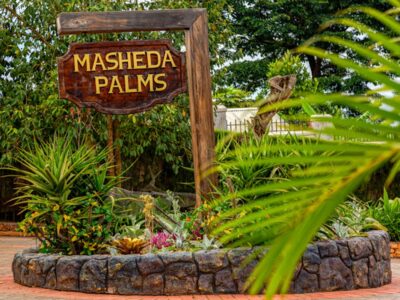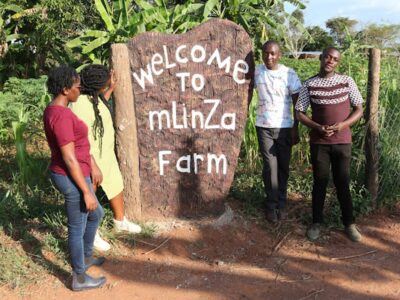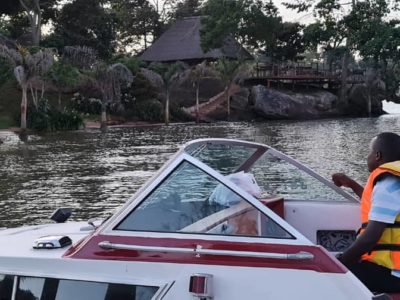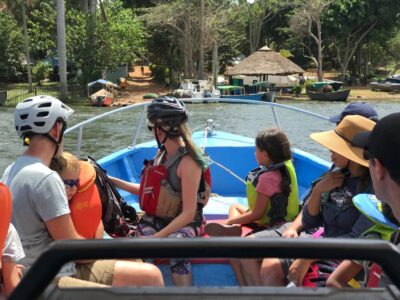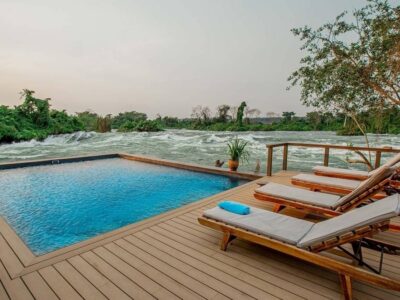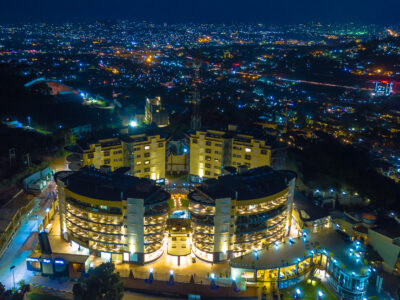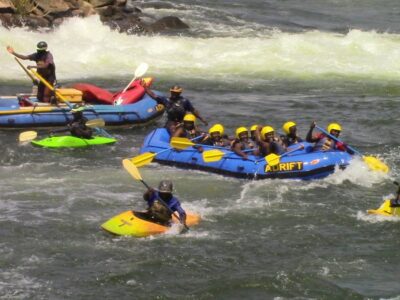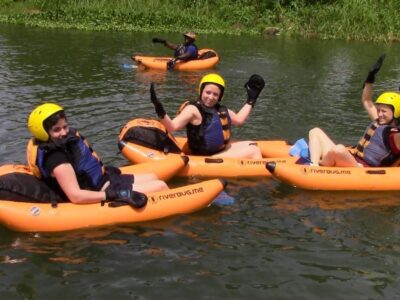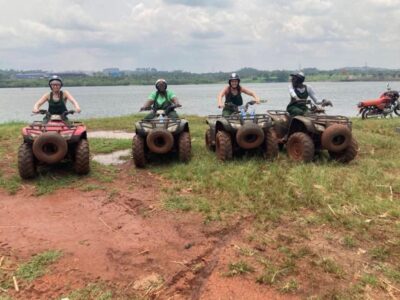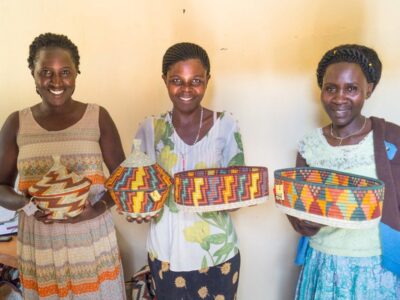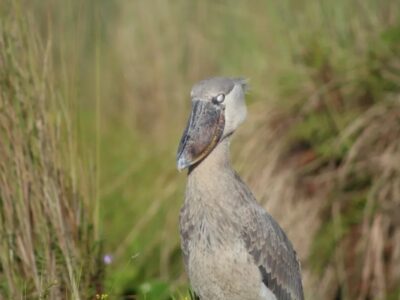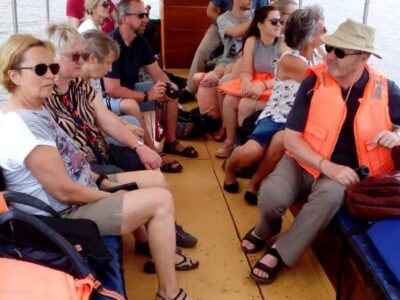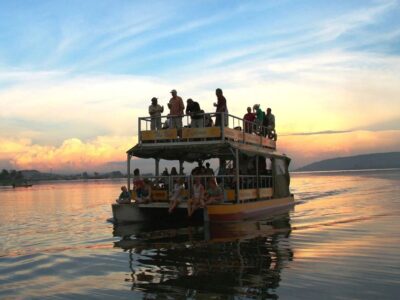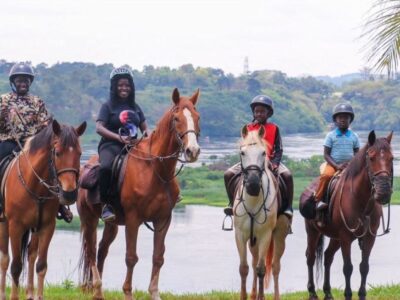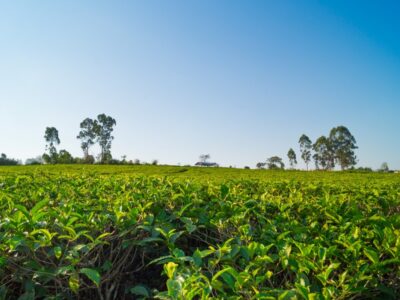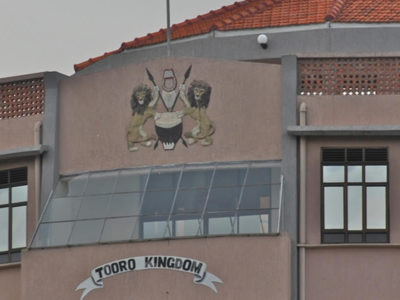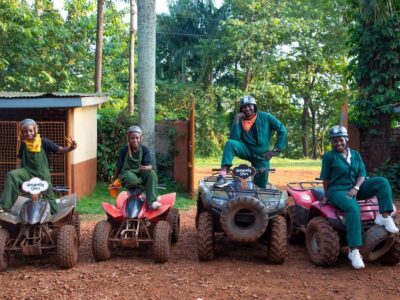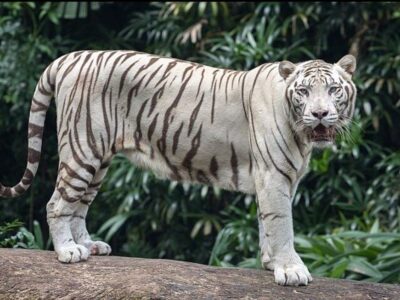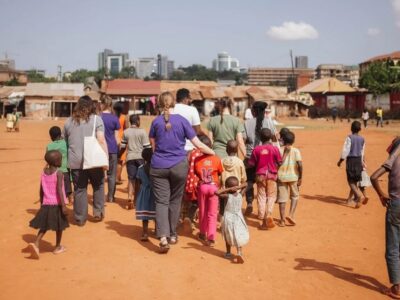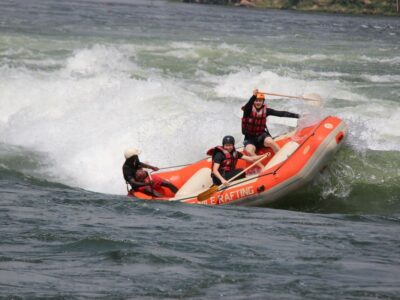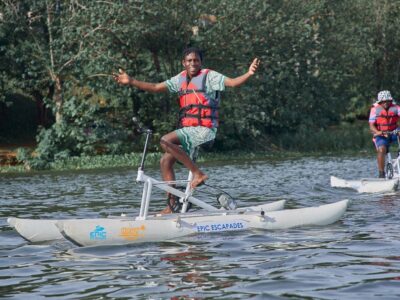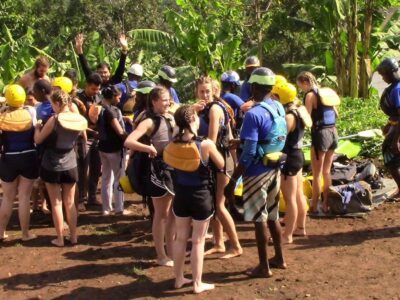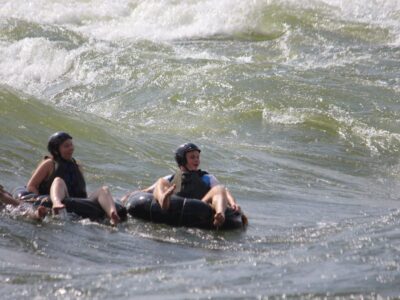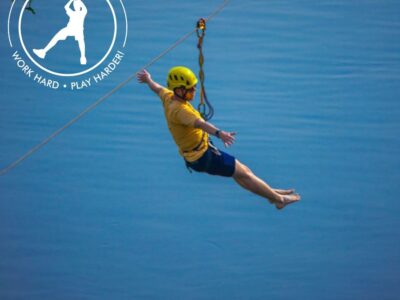Uganda
Uganda is a landlocked country in East Africa famously known as the "Pearl of Africa". Uganda is bordered on the East by Kenya, on the North by South Sudan, on the West by the Democratic Republic of the Congo, on the South-West by Rwanda, and on the South by Tanzania.
The Southern part of this East African country includes a substantial portion of Lake Victoria, which is also bordered by Kenya and Tanzania.
Uganda takes its name from the Buganda Kingdom, which encompassed as a portion of the South of the country including the capital Kampala. The people of Uganda were hunter gatherers until 1,700 to 1,300 years ago, when Bantu-speaking populations migrated to the Southern parts of the country. Uganda gained independence from Britain on 9 October 1962.
Uganda, An Elegant Adventure Destination

Dominated by an expansive golf course leading down to the lakeshore, and a century-old botanical garden alive with the chatter of acrobatic monkeys and colourful tropical birds, Entebbe itself is the least obviously urban of all comparably sized African towns. Then, just 40km distant, sprawled across seven hills, there is the capital Kampala. The bright modern feel of this bustling, cosmopolitan city reflects the ongoing economic growth and political stability that has characterised Uganda since 1986, and is complemented by the sloping spaciousness and runaway greenery of its garden setting.
Ecologically, Uganda is where the East African savannah meets the West African jungle. Where else but in this impossibly lush country can one observe lions prowling the open plains in the morning and track chimpanzees through the rainforest undergrowth the same afternoon, then the next day navigate tropical channels teeming with hippo and crocs before setting off into the misty mountains to stare deep into the eyes of a mountain gorilla? Certainly, Uganda is the only safari destination whose range of forest primates is as impressive as its selection of plains antelope. And this verdant biodiversity is further attested to by Uganda's status as by far the smallest of the four African countries whose bird checklist tops the 1,000 mark!
Yet there is more to the country than wildlife — far more! There is the-mighty Nile, punctuated by the spectacular Murchison Falls, and the setting for some of the world's most thrilling commercial white-water rafting. There are the snow-capped peaks of the Rwenzori, which provide a tantalising challenge to dedicated mountaineers, as well as the Virunga Volcanoes and Mount Elgon, both of which offer highly rewarding hiking opportunities through scintillating highland scenery. More sedately, the myriad islands of Lake Victoria and Bunyonyi are idyllic venues, as are the myriad forest-fringed crater lakes that stud the rift valley floor and escarpment around Fort Portal. Whether you're a first time safari-goer or a seasoned African traveller, Uganda — with its unique blend of savannah and forest creatures, its rare wealth of montane and lake habitats —is simply dazzling.
Excellent wildlife watching and welcoming locals
Uganda, Africa's Friendliest Country
Uganda's reputation as 'Africa's Friendliest Country' stems partly from the tradition of hospitality common to its culturally diverse populace, and partly from the remarkably low level of crime and hassle directed at tourists.
But this amiable quality extends beyond the easygoing people. Uganda's eco-friendliness is attested to by the creation of six new national parks under the present administration, as well as a recent mushrooming of community-based eco-tourism projects at the grassroots level, while the mood of social enlightenment is characterised by the progressive and much lauded policies towards curbing the spread of HIV/AIDS and promoting women's rights. The climate, too, is highly agreeable, reflecting the combination of an equatorial location and medium to high altitudes, while amenities such as hotels and game lodges now rank with the very best Africa has to offer.
Getting Around Uganda
Consistently ranked among Africa’s fastest growing economies since President Museveni came to power in 1986, Uganda has simultaneously experienced a steady expansion of road, communications and other vital infrastructures, and a corresponding increase in international tourist arrivals and upmarket facilities.
Entebbe's modern international airport, set on the Lake Victoria shore 40 kilometres from Kampala, is serviced by several prominent international airlines, ensuring easy access from the USA, Europe and elsewhere in Africa. Charter flights can be arranged between domestic tourist attractions.
Kampala is a modern capital serviced by an excellent selection of international hotels, including a high-rise Sheraton right in the city centre, as well as bustling malls stuffed with banks, shops, restaurants, internet cafes and cinemas. Reputable safari operators and car rental firms based in Kampala and Entebbe offer a wealth of local experience and specialist know-how to international visitors. And whether you travel by coach or rental vehicle, or join an organised safari, surfaced roads link the capital to other large towns such as Jinja, Mbale, Kabale, Kasese and Fort Portal, from where well-maintained dirt roads lead to the game reserves and national parks.
Outside of the capital, most national parks and other tourist hubs are serviced by at least one upmarket lodge, ensuring that the adventurous spirit inherent to African travel is complemented by the full range of creature comforts: stylish en-suite accommodation, fine cuisine, a range of chilled drinks and friendly service. For business travellers, internet facilities are available in most large towns, while an extensive cellular telephone network makes it possible to stay in touch with home in even the most remote of locations.
Uganda National Parks & Safaris in Uganda
Sprawling across both sides of the equator, a network of 10 national parks and several other protected areas offers wildlife enthusiasts a thrilling opportunity to experience Uganda's biodiversity: not only the mesmerising tracts of thorn-bush savannah teeming with antelope, buffalo and elephant, one tends to associate with equatorial East Africa, but also lush expanses of tropical rainforest, shimmering lakes and rivers heaving with aquatic life, and the glacial peaks of Africa's tallest mountain range - Rwenzori Mountains.
Uganda's largest protected area is Murchison Falls National Park, whose palm-studded grassland supports dense populations of lion, buffalo, elephant and Uganda kob, together with the localised Rothschild's giraffe and patas monkey.
Immense concentrations of hippos and birds can be observed from morning and afternoon launch trips along the Nile River below the spectacular Murchison waterfall for which the park is named.
Rwenzori Mountains National Park protects the Eastern slopes and glacial peaks of the 120km-long Rwenzori Mountains or “Mountains of the Moon”, a world-class hiking and mountaineering destination whose significance as a source of the Nile was first alluded to by the geographer Ptolemy Circa 150 AD. Rising from the Rift Valley floor to a wintry elevation of 5,109m, the Rwenzori supports large tracts of evergreen and bamboo forest, while the higher moorland zone is known for its other-worldly cover of giant heathers, lobelias and groundsels.
Set majestically in the shadow of the Rwenzori, flanking Lakes Edward and George, the lush savannah of Queen Elizabeth National Park offers prime grazing to buffalo, elephant and various antelope. A checklist of 600-plus bird species testifies to the extraordinary ecological diversity of this park. Mammalian specialities include the (elsewhere elusive) giant forest hog, and the legendary tree-climbing lions of the Ishasha Sector.
Of all Uganda's forested reserves, Bwindi Impenetrable National Park is best known for its superb gorilla tracking, but it also provides refuge to elephant, chimpanzee, monkeys and various small antelope, as well as 23 bird species restricted to the Albertine Rift.
Mountain gorillas also form the main attraction at Mgahinga National Park, which protects the Ugandan portion of the Virungas, an imposing string of nine freestanding extinct and active volcanoes that runs along the border with Rwanda and the Congo.
The lower-lying and more remote Semuliki National Park, a Ugandan extension of the Congo's Ituri Rainforest set at the base of the Northern Rwenzori, is of special interest to ornithologists for some 40 Congolese bird species recorded nowhere else in the country. Nearby, the spectacular Semuliki Wildlife Reserve, which abuts Lake Albert, is one of the best localities for sightings of the enigmatic, swamp-dwelling shoebill.
Kibale National Park is a primatologist's dream. It hosts a population of more than 1,000 chimpanzees, of which one 80-strong community has been habituated to tourist visits, as well as half-a-dozen readily observed monkey species, including the acrobatic red colobus and black-and-white colobus, and the handsome L'Hoest's monkey.
The closest savannah reserve to Kampala, Lake Mburo National Park is centered on a series of swamp-fringed lakes known for their rich birdlife, notably the secretive African finfoot. The green acacia woodland surrounding the lake harbours dense populations of zebra, warthog, buffalo, impala and various other grazers, including the last surviving Ugandan population of eland, the largest of African antelope.
Set on the Kenya border near Mbale, Mount Elgon National Park encompasses the 4,321 metre mountain for which it is named, which has the largest base of any extinct volcano in the world. A lush mosaic of Afro-montane forest, grassland and moorland habitats makes this park a highly rewarding destination for hikers and other natural history enthusiasts.
In the far North-East, the remote, wild and little-visited Kidepo Valley National Park provides refuge to a long list of dry-country species not found elsewhere in the country, including cheetah and greater kudu, while its perennial waters attract large numbers of elephant and thousand-strong buffalo herds, especially during the dry season.
Uganda Gorillas & Primates in Uganda
Uganda's star attraction is the endangered mountain gorilla, the bulkiest of living primates, and among the most peaceable. Staring into the pensive brown eyes of these gentle giants, who share 95% of their genes with humans, is as humbling as it is thrilling; no less so when one realises that fewer than 700 individuals survive, divided between Bwindi National Park and the Virunga Mountains.
Within Uganda, five habituated gorilla troops — four in Bwindi and one in Mgahinga National Park — can be visited by a total of 30 tourists daily.
Uganda is also home to man's closest relative, the chimpanzee, a delightful ape whose evocative pant-hoot call is a definitive sound of the African rainforest. Chimpanzee communities have been habituated for tourism at Kibale Forest, Budongo Forest and Queen Elizabeth National Park's Kyambura Gorge. A community of orphaned chimps, most of which were confiscated from poachers, can be visited on Ngamba Island, which lies on Lake Victoria 45 minutes by motorboat from Entebbe.
Monkeys are exceptionally well represented in Uganda. Indeed, Kibale Forest boasts the greatest primate variety and density in East Africa, with five or six species likely to be observed over the course of one afternoon walk. Elsewhere, Mgahinga National Park hosts habituated troops of the rare golden monkey, while Murchison Falls is one of the few East African strongholds for the spindly, plains-dwelling patas monkey. The fossilised 20-million-year-old bones of Morotopithecus, the earliest-known ancestor of modern apes and humans, were unearthed in the 1960s near Moroto in Eastern Uganda, and are now housed in the National Museum in Kampala.
Districts, Counties and Kingdoms in Uganda
Uganda is divided into districts, spread across four administrative regions: Northern, Eastern, Central (Kingdom of Buganda) and Western. The districts are subdivided into counties. A number of districts have been added in the past few years, and eight others were added on July 1, 2006 plus others added in 2010. There are now over 100 districts. Most districts are named after their main commercial and administrative towns. Each district is divided into sub-districts, counties, sub-counties, parishes and villages.
Parallel with the state administration, six traditional Bantu kingdoms have remained, enjoying some degrees of mainly cultural autonomy. The kingdoms are Toro, Ankole, Busoga, Bunyoro, Buganda and Rwenzururu.
| Visa requirements | ENTRY INTO UGANDA (VISAS & PASSES)
Any person intending to enter into Uganda should do so only for lawful purposes and in accordance with national immigration laws, guidelines and formalities.
Foreign nationals intending to enter Uganda for purposes of employment should comply with requirements for expatriate employment in Uganda.
All visa prone nationalities must obtain Uganda visas to facilitate their entry into the country.
Uganda visas may be obtained at Uganda missions abroad or by applying online at the Uganda E-Immigration System at www.visas.immigration.go.ug
UGANDA VISAS & CORRESPONDING FEES:
WORKING AND LIVING IN UGANDAPERMITS –WORKING IN UGANDA All foreign nationals intending to work in Uganda must ensure that they are in possession of the relevant work permit. The classes of work permits are listed below. For the requirements for the different categories, please log onto the Immigration Uganda website: www.immigration.go.ug or www.visas.immigration.go.ug CLASS A (GOVERNMENT & DIPLOMATIC SERVICE) Applicants should be persons contracted for service in the Government of Uganda or diplomats accredited for service in Uganda. CLASS A2 (GOVERNMENT CONTRACTORS) Applicants should be persons on Government contracts, including persons serving in Government tertiary institutions. CLASS B (INVESTMENT IN AGRICULTURE) Applicants should be persons intending to invest in the business of agriculture or animal husbandry. CLASS C (MINING) Applicants should be persons intending to invest in the business of prospecting for minerals or mining in Uganda CLASS D (BUSINESS AND TRADE) Applicants should be persons intending to carry on the business or trade in Uganda CLASS E (MANUFACTURERS) Applicants should be persons intending to engage in manufacturing business In Uganda CLASS F (PROFESSIONALS) Applicants should be members of prescribed professionals Intending to practice RIO profession In Uganda CLASS G1 (VOLUNTEERS, NGO WORKERS, and MISSIONARIES) CLASS G2 (EMPLOYEES) Applicants should be persons intending to work as employees whether for gain or not in Uganda. Applicants under this category can only enter Uganda after grant and payment for their work permits. WORK PERMIT RENEWAL
| ||||||||||||||||||||||||
|---|---|---|---|---|---|---|---|---|---|---|---|---|---|---|---|---|---|---|---|---|---|---|---|---|---|
| Languages spoken | English, Swahili, Luganda | ||||||||||||||||||||||||
| Currency used | Ugandan shilling (UGX) | ||||||||||||||||||||||||
| Area (km2) | 241,038 km2 (93,065 sq mi) | ||||||||||||||||||||||||
| Country name | Republic of Uganda |

